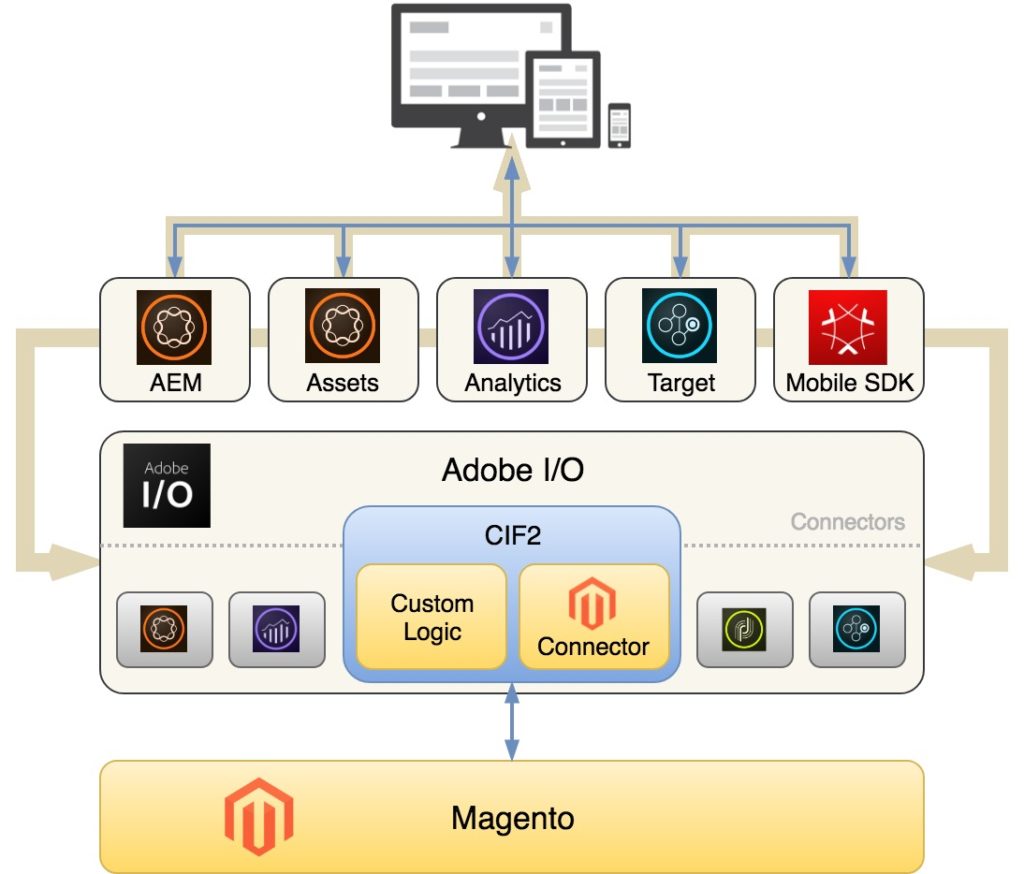Adobe Cloud Commerce & Magento
Experience-Driven Commerce
Customers expect a unified experience across all channels. Amazon 1-click shipping is passé; fluid transactions have become table stakes. Companies that can foster customer relationships digitally will thrive. The combination of Adobe Commerce Cloud and Magento deliver the integrated experience that customers want on an extensible platform with all the power of the Adobe Marketing Cloud.
Adobe + Magento Connector
Here at Bounteous we just completed our first release of an Adobe Commerce Cloud Magento connector that makes it easy to drive Adobe Experience Manager commerce capabilities with Magento. Additionally, it gives Magento commerce site the ability to leverage capabilities across the Adobe Marketing Cloud. The connector has two parts: an open source connector that will be available through Adobe and a set of custom marketing components to accelerate Adobe/Magento implementations.
Headless Commerce: Stability, velocity, and peace of mind
Stand-alone commerce systems can’t keep pace with steadily increasing customer expectations. Marketing requirements are now so elaborate that it isn’t feasible for a single system to provide everything. As we abstract system capabilities to APIs, we create more flexible services. The marketing department can deliver fluid customer experience across channels the keeps customers coming back. It also gives the IT department the tools they need to manage systems efficiently. So teams are delivering staying on schedule and budget.
Adobe Commerce Cloud
Using Adobe Experience Manager (AEM) as a marketing frontend for headless Magento is getting a big boost with the new Adobe I/O ecosystem. The Adobe Commerce Cloud provides an extensible set of microservices and APIs built on Adobe.io runtime that make it straightforward to map commerce capabilities into the Adobe Marketing Cloud.
Microservices Architecture
The service is built in Adobe I/O as a collection of javascript actions that are sequenced to solve complex business behaviors. Openwhisk and Javascript make the system lightweight and highly scalable. In general Adobe Commerce Cloud is taking a more modern approach to commerce integrations allowing for integrations through defined service contracts. With the new architecture, Adobe provides a set of a clearly defined data model and service APIs that allow for interoperability between not only AEM but other services within the Adobe I/O ecosystem.
Commerce Integration Framework (CIF) vs Adobe Commerce Cloud
We already have a few AEM/Magento integrations under our belts with the CIF which is still supported and not going away. Also, CIF is a better choice in some instances. Like when on-premise is a requirement or if persisting a catalog to JCR is desired.
Whats Next
We are excited about the capabilities that the Adobe Commerce Cloud brings to commerce in the Adobe Marketing Cloud. As Adobe rolls out new capabilities we will be adding features to both the Adobe open source implementation as well as our accelerator.




